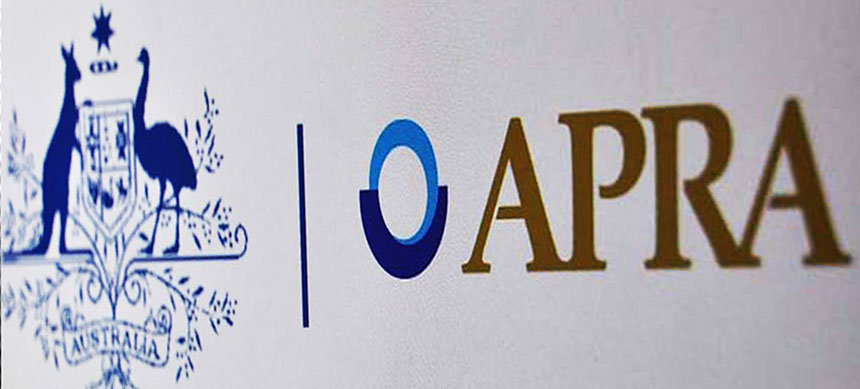The Australian Prudential Regulation Authority (APRA) has sought industry feedback on potential approaches to adjust the capital framework for authorised deposit-taking institutions (ADIs) to make capital ratios more transparent, comparable and flexible. Importantly, the proposals in this paper are not intended to change the quantum or allocation of capital.
 The idea of harmonising with international comparable measures is a good thing in my book, but is this a case of “fiddling while Rome burns” in that the issues we are facing are more significant as lending is still too hot, and households are under the debt pump? But then APRA conveniently reverts to type with its narrow obsession on financial stability interpreted as capital ratios. Safe ground, but myopic.
The idea of harmonising with international comparable measures is a good thing in my book, but is this a case of “fiddling while Rome burns” in that the issues we are facing are more significant as lending is still too hot, and households are under the debt pump? But then APRA conveniently reverts to type with its narrow obsession on financial stability interpreted as capital ratios. Safe ground, but myopic.
In its current program of reform of the ADI capital framework, APRA is pursuing three principal objectives:
- the quantum of capital – to achieve an overall level of capital that meets the ‘unquestionably strong’ aspiration set by the Financial System Inquiry (as set out in APRA’s July 2017 Information Paper);
- the allocation of capital – to improve the risk sensitivity of current capital requirements, where possible, by more appropriately aligning capital requirements to underlying risks (as set out in APRA’s February 2018 Discussion Paper);
- the comparability of capital – to improve the transparency, comparability and flexibility of the capital framework where possible, without materially jeopardising either of the other two objectives.
APRA is also considering measures to make the capital framework more flexible in times of stress. These measures include increasing the size of the Capital Conservation Buffer relative to the size of the minimum Prudential Capital Requirement and potential changes to the point of automatic regulatory interventions. Such realignment of regulatory capital ratios would enhance supervisory flexibility in times of financial or economic stress, either at an individual ADI level or for the banking system as a whole. It may also enhance the usability of capital buffers held by ADIs to manage their capital positions during periods of stress.
The prospective approaches are outlined in a discussion paper released today for industry consultation.
The approaches would not change the amount of capital ADIs are required to hold beyond the unquestionably strong capital benchmarks announced in July 2017.[1] Rather, APRA is considering whether to alter the way ADIs’ capital requirements are calculated and disclosed to facilitate greater domestic and international comparability and transparency of ADI capital strength.
Though Australia’s capital framework is largely based on internationally agreed minimum standards set by the Basel Committee on Banking Supervision, APRA takes a more conservative approach to the definition of capital and the calculation of risk-weighted assets in some areas. Consequently, Australian ADIs typically have lower reported capital ratios than overseas peers with comparable capital strength.
Chairman Wayne Byres said: “APRA’s robust capital framework improves the quality and quantity of the capital held by ADIs, but makes international comparisons more complex.
“The reliance of the Australian banking system on international markets for funding makes it important that investors understand and have confidence in their capital strength during ordinary times and in periods of market disruption.”
The discussion paper released today outlines two general approaches designed to aid ADIs in representing and communicating their capital strength:
Under one approach, ADIs would continue using existing definitions of capital and risk-weighted assets, but APRA would develop a methodology allowing them to improve the credibility and robustness of internationally comparable capital ratio disclosures; or Under a second approach, APRA would change the way ADIs calculate capital ratios to instead use more internationally harmonised definitions of capital and risk-weighted assets. To maintain the strength and risk-sensitivity of the capital framework, there would need to be corresponding increases in minimum ratio and/or capital buffer requirements.
APRA is open to considering these approaches independently or in combination, or indeed retaining its current methodology, and is seeking industry feedback on whether the benefits of the suggested approaches outweigh the regulatory burden and associated increase in complexity.
Separately, the discussion paper proposes measures to make the capital framework more flexible in times of stress, including by increasing the size of regulatory capital buffers relative to minimum regulatory capital requirements.
Mr Byres noted: “None of the changes under consideration would change the level of capital ADIs are required to hold to meet the unquestionably strong capital benchmarks. However, by modifying and realigning regulatory capital ratios, APRA will potentially have greater supervisory flexibility to react to situations of bank-specific or system-wide stress, and allow institutions to return to a position of sufficient capital strength.”
